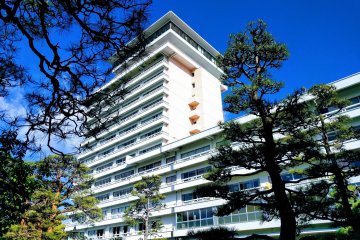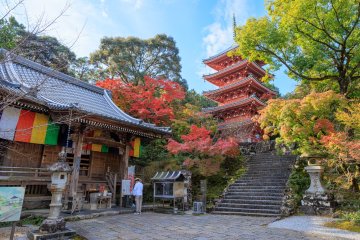The ability to work online from anywhere has definitely opened up the possibilities for folks looking for a different pace in life, but the IG feeds of our favorite rural influencers only show a small part of what it means to live away from Japan’s major cities.
I am currently pondering my next move, and just finished a 3 week stint doing a trial run of living in three locations in Kochi Prefecture. I focused on Kubokawa in the greater Shimanto town area (population around 15,000), the former castle town of Aki (pop. 16,000ish) and finally the outskirts of the capital, Kochi City (about 325,000 people).
Learn from my experiences (and mistakes) with this important checklist of points to cover before making the big move!
1. Spend lots of time in your desired locations
There is a huge difference between vacationing or visiting a location and living there. What is charming for a casual visitor may actually be a source of annoyance for residents, and only spending a few days in a place will not give you the full picture.
To get a real feel of what day to day life would be like, try renting self-catering accommodation for a couple weeks. What is it like grocery shopping? When you suddenly needed some ibuprofen/a pair of socks/insert random item here, how easy was it to get it? If you don’t have a car, what is public transportation like? Is there a doctor nearby? What about restaurants or cafes? All of these questions (and more) should pop up as you spend a longer time working and living in your chosen community.
I have been to Kochi over 12 times, but never for a long period of time, and it was quite illuminating. All three locations ticked most of my required boxes (more on that below!), and I had assumed that Kochi City would probably be the most comfortable, since I have mainly lived in major cities throughout my life. However it was little Kubokawa, the most rural of my options, that really grabbed me. There is a steady stream of visitors, as it is home to artsy Iwamoto-ji Temple, the 37th stop on the Shikoku 88 Temple Pilgrimage, and has a lot of potential. Being a bit smaller, the positive impact I could make on the community could be much greater too.
2. Figure Out the Must-Haves and Good-to-Haves
Everyone has a few things that they require to live as they prefer. For some folks it may be the proximity to good schools, for others a couple friendly bars or a large garden. It can actually be quite tough to really hone in on your must-haves when you live in a large city, as almost anything you could possibly want or need is at your fingertips. A longer term stay in the area you are looking at is one good way of really clarifying your needs versus your wants.
About 2~3 needs are the maximum, if you plan to live rurally, as these are points that are absolutely required. If they are not fulfilled, no matter how much you may love a place, your day to day life is not going to work for you.
My wish list was already pretty clear before starting my trial period in Kochi, but the three weeks of living locally really brought the most important things to the fore: regular public transport to a decent-sized city, a community of like-minded people with musical opportunities, and a beautiful location that attracts some amount of visitors. All of the spots I chose in Kochi fit these criteria on paper, with both Kubokawa and Aki being around 1 hour by train from the capital.
Of course, my list of things I would like to have is much longer: a couple nice coffee shops, a well-stocked public library, hiking trails at my doorstep, an established fruit orchard etc… However, these are things that I can go find (particularly with a car, which is pretty much required for rural living) and can have fun discovering over the years, or create myself.
3. What About Work?
For those who work 100% remotely and plan on doing so for the foreseeable future, you could technically skip this part… but as a typical A-gata type, I like to have a couple of backup plans for any eventuality. And this question is even more important for couples and families planning a move together, as there is a higher likelihood that one of the two will need to find some type of job nearby.
One of the interesting options for those with high levels of Japanese is joining a chiikikyorokutai, where you work to support the community with the skills you already have. The largest organization is JOIN (Japan Organization for Internal Migration), who have an office with helpful staff just a short walk from Tokyo Station.
Alternatively, basing yourself within a commutable distance from a larger city can be better for some. Certain areas even offer instruction in certain industries they need more labor for (as shown quite well in the cute film Wood Job!), although for non-Japanese residents this could be a bit more complicated.
A good online search of opportunities in the area, and a visit to the local Hello Work office while you are testing out your location will give you a better idea of what is out there, while a chat with chiikikyoryokutai groups might help give a better view of what the area needs and what potential business opportunities there are.
4. Connect with the community
The people you live and deal with on a daily basis will determine how well you intergrate into a community, and so making connections and seeing how friendly (or not) folks are is an important step in your planning process.
The older generation tends to be a bit shy at first, so checking out younger, hipper businesses in the area, especially eateries, cafes and any community events/markets, is a good way to start seeing if you can build connections. Many areas have groups of younger residents who come together to promote their region or host events, who would likely be thrilled to have new neighbors and friends.
In addition, seeing if there are any other expats already in the area is a good idea, as they can be a great fount of local knowledge and tips. For Kochi, I was already lucky enough to know a number of folks who have moved there, such as the Crossfit dynamo Violet Pacileo, guest house owner Rosie Maloney, and washi master Rogier Uitenboogaart, which can be reassuring when you are about to make a big step. Facebook, LinkedIn, Instagram and scrolling through local online newsletters and blogs can help you find folks too.
5. Finding a place to live
Ok, so you have found your ideal seaside town or mountain village… but can you actually find a place to live? Unless you are extremely secure in your decision, most folks opt to rent for a couple years before considering buying property.
But in many rural locations, finding a place to rent can be a huge issue. I first became aware of this when visiting the rather lovely little town of Niyodogawa, which is also in Kochi. As explained in depth in this video, apartments are often not as common in rural areas, and homeowners are reluctant to rent out their houses, which are often the “family home” where their extended family gathers once a year for New Years or other events.
Popular resort areas, such as those near ski areas or beaches, can be particularly tough, and surprisingly expensive too.
In some areas the local governments have created 移住体験住宅, or houses that are set aside for folks thinking about moving to the area. The length of time you can stay depends, but in my experience in Kochi I have found ones that range from a minimum of 1 week to a maximum of 3 years.
Are you looking to escape to the country? Where and why?










